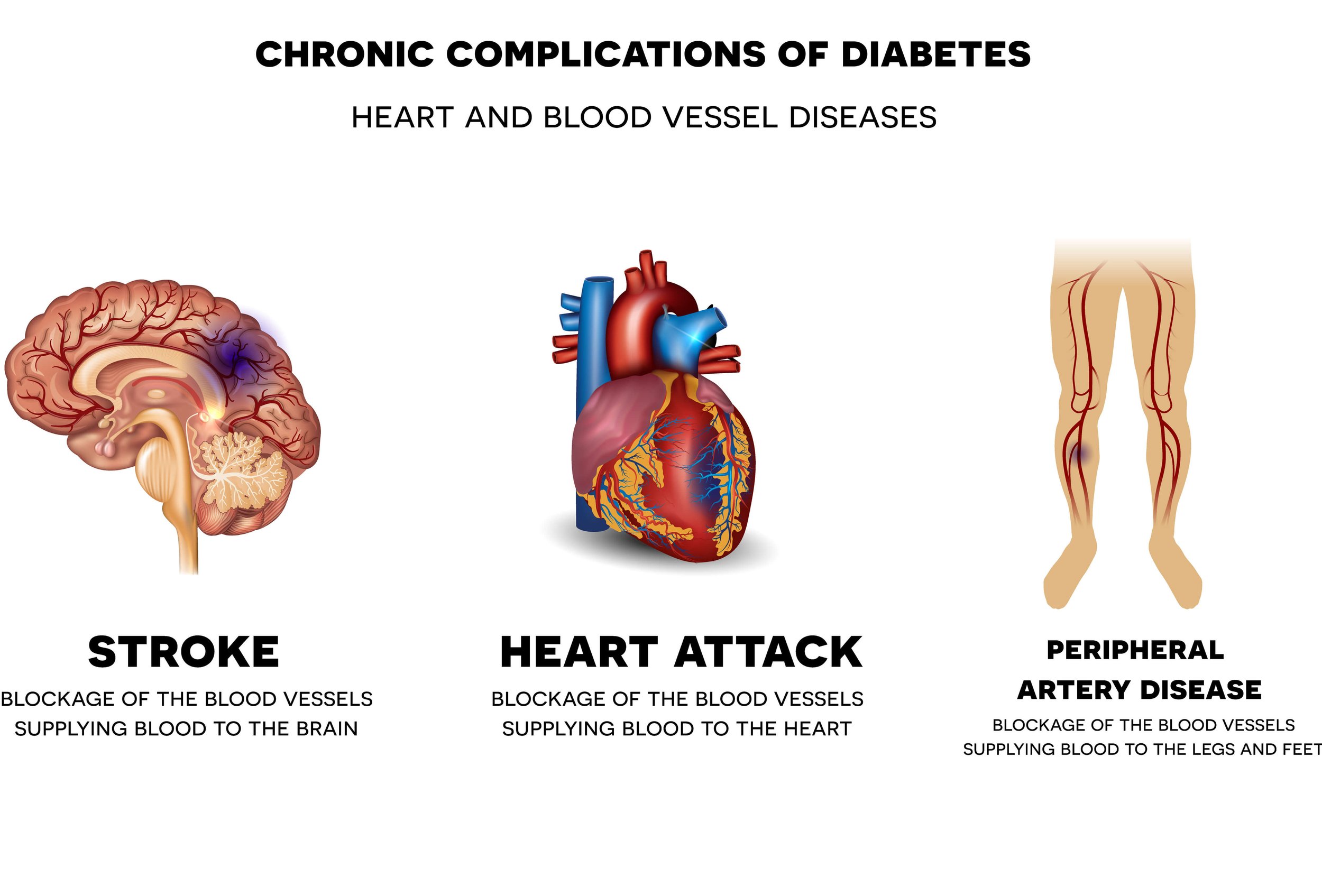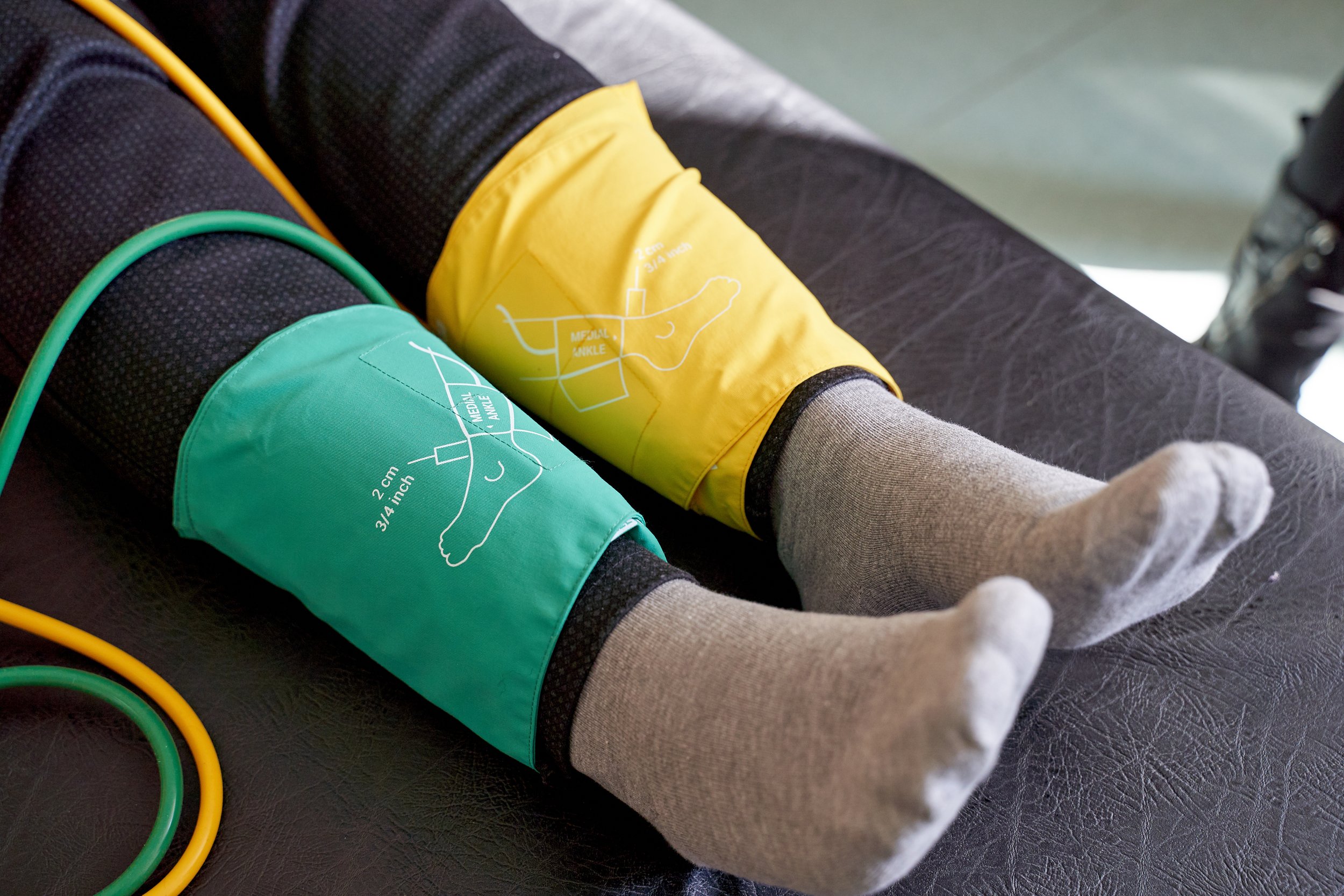
Blocked Leg Arteries
Also called peripheral artery disease.
Blocked leg arteries are a symptom of a condition called peripheral artery disease (PAD), which occurs when there is a narrowing or blockage of the arteries in your legs.
This blockage results in decreased blood flow and a range of symptoms, including leg pain, weakness, and numbness.
If you have PAD, your risk of heart attack and stroke is significantly increased. If left untreated, a patient diagnosed with PAD has a 5 year death rate as high as 33%, with most deaths due to heart attack and stroke.
Who is at risk of developing plaque
in their arteries?
Smokers
Smoking cigarettes has consistently been linked to numerous health issues, and peripheral artery disease (PAD) is definitely one of them.
For smokers, this happens because the chemicals in cigarettes damage the inner lining of blood vessels, making them more vulnerable to plaque buildup.
Diabetics
In 2021, over 38 million Americans were living with diabetes. It’s a condition that not only affects your blood sugar levels, but also puts you at increased risk of developing peripheral artery disease (PAD).
This can lead to serious consequences, such as pain and difficulty walking, or even amputation in severe cases.
Older people
The risk of developing PAD increases with age due to factors such as a sedentary lifestyle, smoking, and high blood pressure. It is important for older adults to pay attention to their health and engage in regular physical activity and a healthy diet to reduce the risk of developing PAD.
Those with a history of vascular issues.
Those who have had a stroke or heart attack are at increased risk of developing peripheral artery disease.
Symptoms of blocked leg arteries
The most common symptom is leg pain during activity that goes away during rest.
Most people do not experience symptoms of peripheral artery disease! That’s why it’s so important to get a screening for the disease.
Other symptoms you may experience include:
discoloration
numbness
tingling or coldness in the lower legs and feet
ulcers or sores on the legs or feet that do not heal
gangrene (dead tissue)

How do you diagnose blocked leg arteries?
Ankle brachial index (ABI)
We will perform a complete history and physical exam and possibly order blood tests.
However, ankle brachial index (ABI) is primarily what we use to diagnose PAD. It’s a simple and harmless test that only takes a couple minutes to complete by comparing blood pressure between your arms and legs. If the pressure is lower in your ankle than in your arm, it’s possible you have PAD.
An ABI < 0.90 and a TBI < 0.7 confirms the diagnosis of peripheral arterial disease.
Angiogram
An angiogram is a test that uses X-rays and a special dye to look at the blood vessels in a specific area of the body. In the case of PAD, an angiogram will look at the vessels in the affected limb(s) and show if there are any blockages or narrowing. This information can then be used to create a treatment plan for you.
Treatment for blocked leg arteries
Angioplasty
Angioplasty is a minimally invasive treatment that helps clear your arteries of the plaque that’s blocking them.
One such option is angioplasty, a procedure that involves inserting a small balloon into the blocked artery and inflating it to widen the passage. This helps to increase blood flow to the affected area, reducing the risk of critical limb ischemia and ultimately saving patients from potential amputations.

Schedule a consultation and improve your health.
Get your procedure done where you’re the center of our attention.





